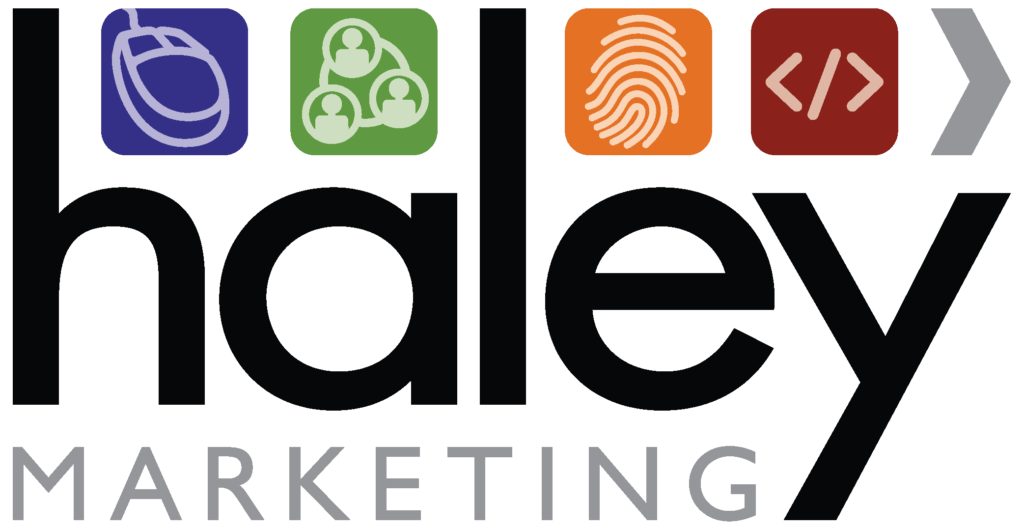For a couple of years, the term “programmatic job advertising” has bounced around the staffing industry. It’s becoming more popular by the year and seemingly by the month.
It’s easy to get caught up with any new technology and want to implement it right away. The excitement of beating your competition and gaining an edge creates energy.
But, not everyone is sure what it does. Not everyone knows how to implement it correctly. And when we do implement new technology with poor results, we get frustrated. It’s easy to dismiss the technology as something that won’t help your staffing agency and totally write it off.
However, that’s not the answer.
That’s the purpose of this blog.
Since the start of 2018, Haley Marketing has been researching programmatic job advertising and then implementing it for our clients. We’ve learned a LOT of lessons. And now, we want to share two of those lessons with the industry.
How does programmatic job advertising work for the staffing industry?
Lesson #1 – Using a Programmatic Job Board as Another Source
Every job board features a unique differentiator. For Indeed, it’s the largest job site globally, featuring a lot of candidates with a quick application process.
Now, I want to talk about a programmatic job board like Appcast Xcelerate, Recruitics Reach, PandoLogic, etc.. (there are other examples from companies, but these are widespread examples.)
The differentiator with these job boards is their programmatic algorithm. They’re going to read your job description, job title, and geography before determining which job boards to display your job on. It will be different for a maintenance mechanic in Cleveland, Ohio, and a registered nurse in Kansas City.
Why does this work for the right staffing companies? It’s the perfect way to distribute your jobs to a variety of job boards at once, without needing individual relationships with each job board and without having to post to each job board manually. (think of a mutual fund vs. buying individual stocks)
However, this is a significant part – think of programmatic job boards as just another source in your recruitment budget. It’s NOT going to find a hidden source of candidates. It’s NOT going to solve your recruitment challenges magically. It’s NOT going to deliver cheaper applications than using Indeed’s Quick Apply or ZipRecruiter’s Quick Apply. Those are apples-to-oranges comparisons.
It has some great benefits – diversification of job boards, algorithms making decisions on where to post your jobs faster than any human could decide, only paying when someone applies, not just when someone clicks. It works well with skilled trades, healthcare, information technology, and professional jobs. It’s not the right fit for warehouse, call center, and entry-level admin jobs.
This part of the blog might sound like I’m discouraging using a programmatic job board. It’s exactly the opposite. We work with several companies where a programmatic job board provides awesome results as part of their monthly budget.
I want to make sure staffing agencies know what they’re buying and what to expect in results!
(Also, one pro tip – make sure you have triggers in place to manage your monthly and weekly budget, so it paces throughout the week and month. We’ve heard horror stories of a monthly budget being gone by the fourth of the month.)
Lesson #2 – Using Programmatic Software to Manage Your Entire Budget
Forget about the first lesson right now.
This lesson can help every single staffing agency (or company for that matter) that is advertising on job boards.
I’m not being dramatic. I’m not overpromising.
Here’s why – when companies use programmatic software to manage their entire budget, their future budgetary decisions are based on data. Not gut instinct, but actual numbers and data from their unique candidate audience.
Let’s walk through an example:
- Staffing Agency XYZ advertises on two job boards (let’s say A and B) and breaks down its jobs into two priorities: high and low. It’s an industrial staffing agency using a quick apply method.
- We’ll put 75 percent of our budget on the high-priority jobs during the benchmarking phase and 25 percent on the low-priority jobs. All of that is split evenly between our two job boards.
- Here is our data after the benchmarking phase:
- High Priority Job Board A: $2.10 CPA
- High Priority Job Board B: $3.00 CPA
- Low Priority Job Board A: $4.00 CPA
- Low Priority Job Board B: $4.03 CPA
What do we do now? If our recruitment goals focus on getting as many applications as possible at the lowest cost, we shift more high priority money to job board A and maintain our allocation on the low priority jobs. Now let’s take it a step further.
- Here is our quality data after the benchmarking phase:
- High Priority Job Board A: $21/quality application
- High Priority Job Board B: $15/quality application
- Low Priority Job Board A: $28/quality application
- Low Priority Job Board B: $40.30/quality application
Originally, we were going to put more money to Job Board A for our high priority jobs based solely on application cost. Looking deeper into the data, this shows Job Board B has a higher cost of application but a lower cost per quality application. That’s the most important metric! For our low priority jobs, we were going to keep our allocation the same, but this data shows that Job Board B brought a cheaper quality application.
Your staffing agency might be doing these tactics now, but I’m guessing it’s very manual and cumbersome. Programmatic software centralizes and automates most of the processes you are doing manually. Your team doesn’t have to manually post and take down jobs to the two job boards. Your team doesn’t have to collect and combine data from two sites.
All of that is automated because the best staffing agencies who use programmatic software teach the software what to do to meet their recruitment goals. How would we do it in this example?
- Create a system to automate which of our jobs get high or low priority and teach the software what to look for. Two different methods work really well.
- Method 1: Put a “hashtag” or “keyword” in your job description and teach the software what to look for – #companynameLOW or #companynameHIGH”.
- Method 2: Put a custom field in your applicant tracking system software with a “low” or “high” designation. The XML feed picks up your field, and it goes into the programmatic software, which we teach to apply one bidding strategy for the “low” jobs and another bidding strategy for the “high” jobs.
- Teach the software that we want to distribute our jobs to Job Board A and Job Board B. With different bidding strategies and allocations for the low-priority jobs and high-priority jobs.
- Allocate the budget right in the software on a monthly and weekly basis to pace correctly.
Why does this help everyone? Two reasons:
- Your process becomes automated. No more manual posting. No more logging into multiple sites. Your team has a system in place to identify low-priority and high-priority jobs. As jobs close, they automatically stop receiving sponsorship. As new jobs get posted, your team follows the system in place.
- Source tracking is available. We know which candidates applied from Job Board A and which candidates applied from Job Board B. Your team tracks which candidates are quality and which candidates become placements. Then your job spend shifts accordingly.
Staffing agencies don’t have to use programmatic software for that process of automation and source tracking, but programmatic software makes it a whole heck of a lot easier.
Get More Return from Your Job Board Spend
At the end of the day, that’s what I want for staffing agencies and all companies. If you invest heavily in your recruitment budgets, automate as much as possible and have a system in place to track the ROI. We have too much data not to be making better decisions.
Ready to learn how Haley Marketing can help? Contact our recruitment marketing team today!

